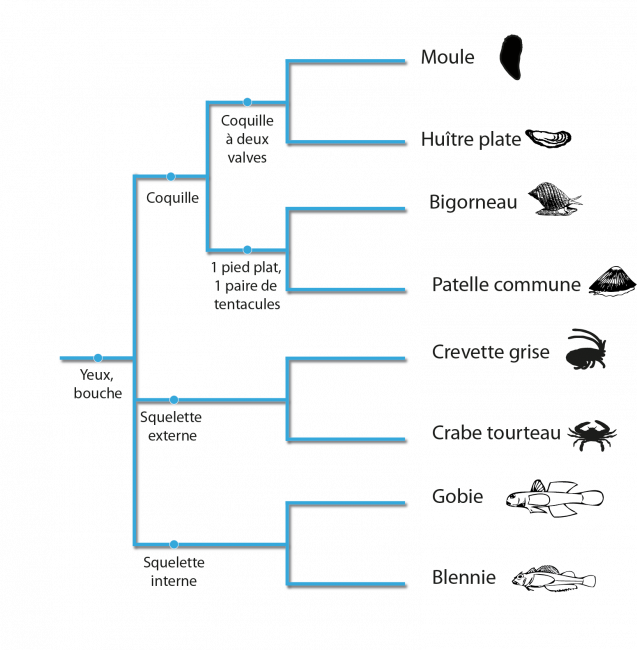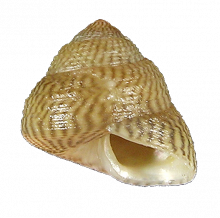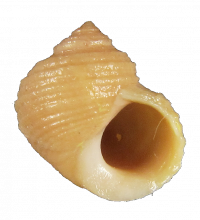The biology of gastropods
With their grey, iridescent, yellow or brown shells, coastal gastropods delight us with their cuteness. But what are these small animals that populate the foreshore ?
Some explanations on the classification of gastropods...
The marine shellfish that we propose to follow are all different from each other. However, they share some common points. Classification is a methodology that allows us to classify and group living beings according to the characteristics they have in common. Thus, a large part of our marine shellfish are mollusks because they have :
- a head and a rapping tongue (except for bivalves), called a radula, which allows the animal to feed itself;
- a foot, muscular organ, which allows them to move;
- presence of a mantle allowing to manufacture the shell
A large part of the mollusks is herbivorous, they use their rapping tongue, called radula, to feed (attention: the radula is not present in bivalves such as mussels or flat oysters which are filtering organisms). Molluscs have a complete digestive system (stomach, intestine, anus).
Within the group of molluscs, we find the gastropods whose characteristics are the following:
- a head with tentacles (sensory organs) ;
- a well-developed foot with an operculum at the end to separate the animal from the outside environment when it retracts into its shell;
- gills allowing gastropods to breathe.
Among the gastropods present on the foreshores, commonly called periwinkles, we generally find species belonging to two groups: the gibbules and the littorines.
The gibbules
The gibbules support globally quite well the desiccation (the umbilical gibbule can thus remain in the open air more than 9 consecutive hours). They feed on the biofilm deposited on the algae, but also on the seaweed (decomposing algae) and sometimes on the algae themselves.
The gibbules are species of separate sexes. The reproduction generally takes place in spring, from April-May. It breaks up in a phase of emission of gametes then of fertilization. The larva, which is called the veliger larva, spends some time in planktonic stage, i.e. it is carried by the currents. Depending on the species, this phase lasts from a few days to several weeks before settling on the bottom (benthic phase) and becoming a gibber.
The littorines
The littorines can for some of them, as for example the Littorina saxatilis, support very long periods out of water.
Their diet is composed of diatoms (unicellular brown algae) present on the rock, seaweed but also biofilm present on the surface of algae and algae themselves (the Littorine obtuse is also fond of Ascophyllus knotty strips).
Littorines are hermaphrodites, they fertilize each other. The fertilization of the eggs is internal. It occurs all the year. Once expelled, the eggs are imprisoned in a viscous binder and, it happens that one finds some stuck on the fronds of the brown algae. The hatching occurs 4 weeks later.
However, the periwinkle, Littorina littorea, is a species where the sexes are separated. Reproduction is internal and includes a planktonic larval phase of about one month before giving juvenile individuals in the benthic phase.



